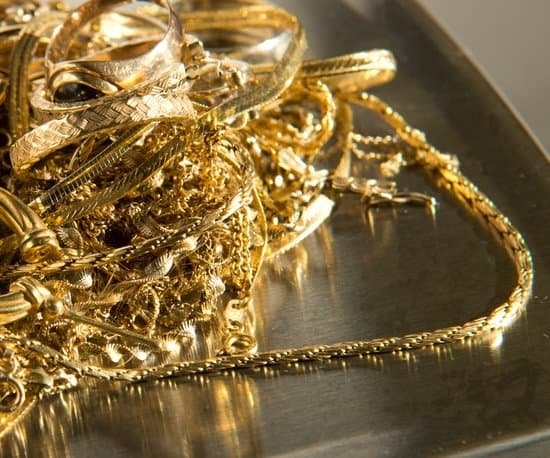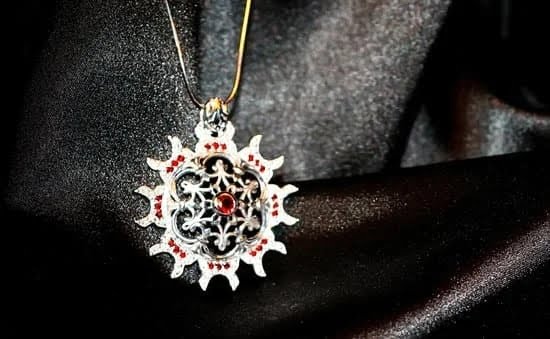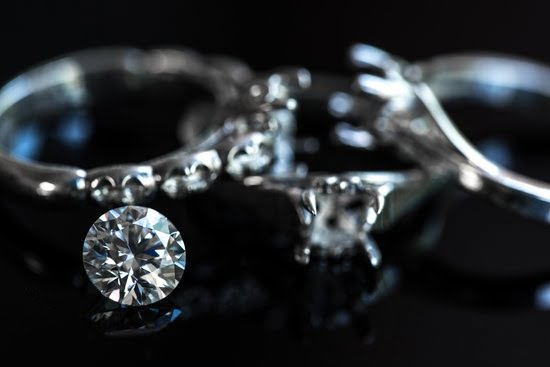Introduction
Refining gold jewelry is the process of transforming scrap or used jewelry into pure and refined gold. The process involves a number of steps which include chemical processing and separation of the base metals from the gold. The chemical processes are often complex, but generally involve the combination of various chemical solvents and acids to separate different metals from each other. The separated metal is further processed through smelting, electrolysis, aqua regia, or chlorine extraction; all designed to remove impurities. Once the refining process is complete, it leaves behind nothing but pure gold that can be molded into various forms such as coins, bars or ingots for future use.
Different Types of Gold Jewelry and Their Impurities
Gold is one of the most popular materials for jewelry. It is malleable, pliable and can be crafted in beautiful shapes and designs. However, gold is also prone to acquiring impurities from everyday wear and exposure to air. In order to refine gold jewelry, one must first determine what kind it is made of and how it was processed before being sold.
There are three main types of gold used in jewelry—pure gold, alloyed gold and karat gold. Pure gold is naturally occurring and contains 24 karat purity or 100% pure gold with no other additional metals mixed in. Alloyed gold means that other metals have been added as a combination with pure 24K gold; lower carat weights are achieved this way (14K, 18K, etc.). Karat gold begins as alloyed gold but then goes through a process known as electroplating wherein an electrical current deposits a thin layer of pure 24K onto the surface of the alloyed metal.
Refining processes will vary according to the types of metals present in the jewelry piece that require removal. Pure golden jewelry pieces should never undergo an intense refining process since no contaminants are present that need to be extracted from the surface; milder cleaning techniques like steamers and ultrasound waves will work well here. However, depending on the amount of impurity present, more rigorous techniques like fire assay can be used on both alloyed and karat rings along with various acids which dissolve away excess material that would otherwise not be removed by mild cleaning methods.
Gathering the Necessary Materials and Tools
Refining gold jewelry is an essential part of the process of creating fine pieces. It can also help revive old or damaged pieces. The first step when refining gold jewelry is to gather all the necessary materials and tools. You will need a pair of safety goggles, rubber gloves, crucible, flux (a mixture made from salts and corrosive materials), refinery paste-a substance created for refining jewelry-and your piece of jewelry. Other tools may include a magnifying glass, a file, tweezers, tongs, scissors, forceps, and an assortment of burrs and engravers for cutting away softer metals such as copper from the gold piece you are working on. Additionally, you may need some specific chemicals to enrich or neutralize the gold item depending on its chemical state. These materials can be purchased either online or at your local goldsmithing supply store.
Safety Rules to Follow Before and During Refining
Before you ever begin refining gold jewelry it is essential that you understand and follow strict safety protocols. Without taking the proper precautions, you can expose yourself to harmful chemicals or put yourself in physical danger. Therefore, to make sure that the process goes off without a hitch, here are some basic safety rules when refining gold jewelry:
1. Understand and properly use protective gear such as gloves, goggles and masks before beginning your work. This gear is important to prevent any contact with nasty chemicals which may fly off when melting the jewelry.
2. Make sure to work in a well-ventilated area while also avoiding flame sources such as an open window or blowing fan. Doing so will help keep your work environment safe in case of any chemical reactions during the refining process.
3. Wear long sleeves and pants to protect skin from any contact with acid or bases used in these processes. Be especially careful when changing out tools or disposing of byproducts as these can be potentially dangerous materials if not properly handled.
4. Always double check all equipment used while refitting the gold jewelry before switching power on or energizing the machine. This is particularly important if any volatile substances such as acids are being used during the process as it could increase fire hazard risk if left unchecked for too long without constant monitoring from a qualified individual who understands how it works correctly.
How to Set Up Your Gold Jewelry for Refining
Before you start the process of refining gold jewelry, it is important to properly prepare your items for refining. This can include anything from gathering necessary supplies, making sure all of the items are clean and organizing them correctly so that they’re easy to work with.
To gather necessary supplies, you will need items such as safety glasses, a respirator (if needed), flux and an item such as borax or baking soda- both of which are used to remove dirt or tarnish from your items. Make sure you also have an appropriate heating source such as a gas or electric stovetop and some sort of container like a Pyrex dish.
Now that you have the items necessary for refining, it is important to make sure all of the gold jewelry pieces are visibly clean. To do this use warm soapy water – however make sure that any jewels if present on the jewelry are not soaked in water for too long otherwise any adhesive will loosen. Afterward use a polishing cloth as well as other tools available when necessary to buff out any tarnishes on each item.
Once the pieces are cleaned up properly, the last step before actually beginning refining would be sorting through the jewelry and grouping similar pieces together in order to maximize efficiency during processing such as separating rings from bracelets etc.. Once organized appropriately, you’ll be ready to start the gold refinering process!
Step-by-Step Refining Process
1. Gather the necessary supplies: In order to refine gold jewelry, you will need access to an industrial-grade chemical acid, a pair of protective gloves and eye protection, a patch of thick rubber sheets or large trays, and some form of filtration system.
2. Separate the parts: Take the gold pieces and separate them based on their karat value. It is important to not mix different types of metals when refining so it’s important to keep karats separated.
3. Wet-test each piece: Before placing items into the acid solution it’s important to test each piece with a “wet test”. This is done by dropping a few drops of hydrochloric acid onto the surface of each item (remember – gloves and eye protection are required). If there is no reaction, then it is likely fine for refining.
4. Place the items into your acid bath: The next step is to place all of the items in an acid bath made from 2 parts water and 1 part muriatic or hydrochloric acid at room temperature for about 10 minutes – this process will dissolve any impurities within each item (again – always wore protective gear during this process).
5. Pour items into your filtration system: When time has passed, pour all contents from the acid bath through a filtration system into either trays or rubber sheets placed below (the trays/sheets should be thin enough that any gold particles fall through but sturdy enough that they don’t allow small pieces of other metals through).
6. Rinse off remaining elements: After emptying the tray/sheet, take warm water and separate the remaining residue gently with your gloved hands until nothing remains in either tray or sheet except water being removed by gentle washing away motions.
7. Allow your pure gold pieces to dry thoroughly: Once all residue has been removed allow your pure gold pieces to air dry completely before proceeding further as contact with moisture may ruin some of its properties otherwise known as “bleeding”.
Practices to Extract Maximum Gold Yield
Refining gold jewelry is the process of separating and extracting the gold from stones, alloys, impurities, ore and dirt. To refine gold jewelry, use acids, such as aqua regia and hydrochloric acid, to break down material that contains gold into small particles. Once the mixture separates into two layers, you should be able to see a layer of gold on top of the other substances. Remove this layer with an eyedropper and filter it through an activated charcoal filter until only pure gold remains.
To maximize your gold yield during refining processes, it is important to firstly know how much gold content is present in the jewelry. This can be determined by using simple testing tools such as an x-ray fluorescence tester or acid assay test kit. Knowing this value can help to identify the most suitable method for refining for maximum results: for example, large quantities of high-carat jewelry would require higher doses of aqua regia than low-carat items that could be refined by simpler methods such as electroplating or purification melting.
Another way to improve the efficiency of your refining process is by separating any stones or gemstones from the material before commencing with treatment procedures – these non-gold materials will lessen your yield if not removed beforehand. For this task, you may use a polishing machine that will also serve to remove dirt and other contaminants from your scrap pieces in preparation for refining. Finally, ensure all of your equipment is clean and dust free throughout every step of the process in order to maintain high quality standards within each batch being treated.
Cleaning and Enhancing the Final Product
In order to refine gold jewelry, you first need to heat the metal with a torch. The torch will help cause the oxidation of any impurities in the metal. After the impurities have been removed, the now-purified jewelry should be rinsed with distilled water and set on a sturdy surface for further polishing techniques. If desired, you can use wire or rotary brush wheels to give a softer appearance to your piece. This will help create a more uniform look overall. After this is complete, you may want to add shine back by buffing with aluminum oxide cloths and jeweler’s rouge cream until you are satisfied with how it looks. Finally, after all of these steps have been completed, one can then add a dip or sealant on top of your piece which will help protect it from any future oxidation. With these steps, anyone can successfully refine their gold jewelry safely and effectively without any problems.
Different Methods to Refine Gold Jewelry
When refining gold jewelry, it is important to choose the best method for the job. Some of the most common methods are chemical, mechanical or electrolytic refinement. Chemical refining involves using a solution of specified chemicals to dissolve impurities that can accumulate in the gold over time. Mechanical refinement is usually done using buffer wheels and abrasive particles to remove any dirt or tarnish from the surface of the jewelry. Lastly, electrolytic refinement involves passing an electric current through a bath of acid and gold to separate out impurities like copper, silver and palladium. Depending on what kind of results you are looking for, these are just some of the ways that you can refine your gold jewelry. Before attempting any methods though, it is important to consult an expert on proper safety protocols to ensure the best possible results.
The Benefits of Refining Gold Jewelry
Refining gold jewelry is a process that involves cleaning and purifying the metal, removing any unwanted impurities, and making it strong and durable. Refined gold jewelry is an incredibly valuable asset which not only looks attractive but is also extremely resilient and reliable over time. There are a few primary benefits associated with refining your gold jewelry:
1. Appearance: Refining your gold allows you to create beautiful pieces of jewelry that have a sparkle and shine unlike anything else. Additionally, it enables you to restore or improve older pieces of jewelry by revitalizing them with a fresh coat of glossy polish.
2. Purity: The impurities found in raw gold can corrode the material over time and decrease its longevity. When these impurities are removed during the refining process, the resulting product is purer and has much greater durability than before.
3. Resale Value: As refiners increase the purity of gold jewelry, it becomes more desirable for both clients who already own the piece and potential buyers on the market. Thus, if needed or desired, pieces of refined gold jewelry usually have higher resale values than items left unrefined or in their original condition.
4. Price Stability: Since its value doesn’t deteriorate as quickly when exposed to environmental factors like air or water, refined gold possesses more stability than non-refined versions in terms of prices as well as physical appearance. This means that owners don’t need to worry about degradation over time causing them to suffer financial losses.
Troubleshooting Tips
If you’re having trouble refining your gold jewelry, there are several possible solutions. First, make sure you start with clean pieces of jewelry. Any dirt or grime left on the pieces can result in impurities that can negatively affect the quality of your refined gold. Make sure to also use proper safety equipment throughout the refining process, such as gloves and safety glasses.
You can also try varying the amount of time spent in acid baths; some pieces may require more or less exposure to the acid for optimal refinement results. Additionally, check on the progress of your jewelry periodically during refinement; notes about appearance and texture changes can help you adjust any process parameters accordingly. Lastly, if you’re having difficulty removing solder from the piece after using an acid bath, you can try using a torch instead to break apart solder joints.
Conclusion
By now, you have learned the basics about refining gold jewelry. You have also seen how to use a variety of different tools and techniques in order to purify your jewelry of unwanted impurities. In addition, you should always remember that when it comes to safety, it is never a bad idea to take extra precautionary measures! Always make sure you follow the instructions carefully and wear protective gear while handling any hazardous chemicals. When done correctly and with care, refining your gold jewelry can give it a shine like no other!

Welcome to my jewelry blog! My name is Sarah and I am the owner of this blog.
I love making jewelry and sharing my creations with others.
So whether you’re someone who loves wearing jewelry yourself or simply enjoys learning about it, be sure to check out my blog for insightful posts on everything related to this exciting topic!





